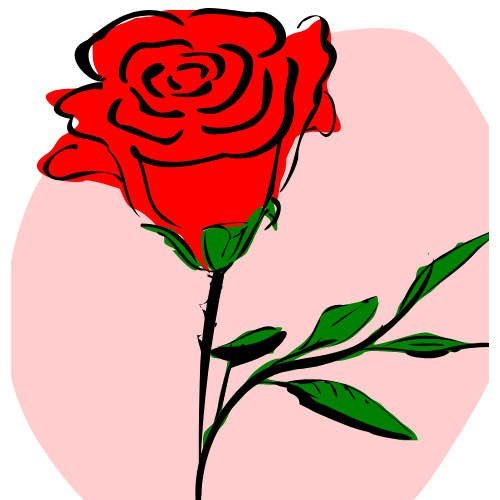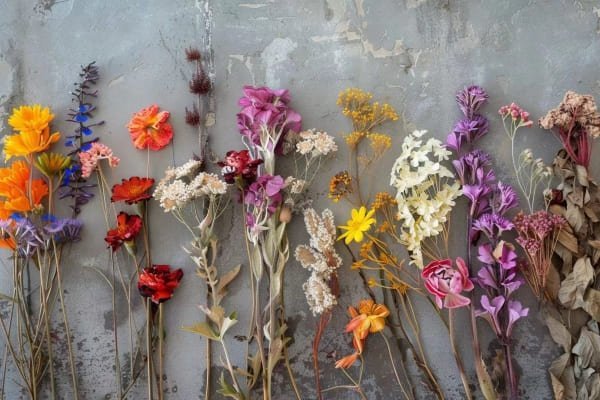


Dried flowers have been used in culinary applications for centuries, offering unique flavors, vibrant colors, and various health benefits. From garnishes and flavorings to teas and desserts, dried flowers can enhance both the taste and aesthetic appeal of many dishes. This comprehensive guide explores the different types of dried flowers used in cooking, their benefits, and various recipes that showcase their culinary versatility.
Lavender is one of the most popular edible flowers, known for its sweet and slightly citrusy flavor. It pairs well with both sweet and savory dishes.
Uses:
Dried rose petals are widely used in culinary applications for their sweet, floral flavor and beautiful appearance.
Uses:
Chamomile flowers have a sweet, apple-like flavor and are commonly used for their calming properties.
Uses:
Hibiscus flowers have a tart, cranberry-like flavor and are rich in antioxidants.
Uses:
Marigold, also known as calendula, has a slightly peppery and tangy flavor.
Uses:
Jasmine flowers are known for their sweet, fragrant aroma and delicate flavor.
Uses:
Many dried flowers, such as hibiscus and rose, are rich in antioxidants, which help protect the body from free radicals and reduce the risk of chronic diseases.
Flowers like chamomile and calendula have anti-inflammatory properties, which can help reduce inflammation and soothe the digestive system.
Chamomile and lavender are well-known for their calming and relaxing effects, making them ideal for reducing stress and promoting sleep.
Dried flowers like marigold and chamomile can aid digestion and help alleviate digestive issues such as bloating and indigestion.
Flowers such as echinacea are known for their immune-boosting properties and are often used to prevent and treat colds and other infections.

Ingredients:
Instructions:
Ingredients:
Instructions:
Ingredients:
Instructions:
Ingredients:
Instructions:
Ingredients:
Instructions:
Dried flowers can add color, texture, and flavor to salads. Use petals from flowers like calendula, rose, and marigold to enhance the visual appeal and taste of your salads.
Adding dried flowers to soups and stews can provide a unique flavor profile. Chamomile and lavender can impart a subtle sweetness, while hibiscus can add a tangy note.
Incorporate dried flowers into bread and pastry recipes for a floral twist. Lavender, rose, and marigold petals can be mixed into doughs or sprinkled on top before baking.
Creating custom tea blends with dried flowers is a simple way to enjoy their flavors and health benefits. Experiment with combinations of chamomile, rose, and hibiscus to find your favorite blend.
Infusing syrups and honeys with dried flowers can add a unique flavor to your drinks and desserts. Use lavender or rose to create floral syrups for cocktails and lemonades.
Many companies offer floral tea blends that feature dried flowers such as chamomile, hibiscus, and jasmine. These teas are not only delicious but also provide various health benefits.
Pre-packaged edible flower mixes are available for use in cooking and baking. These mixes typically include a variety of dried flowers that can be used to garnish dishes or add flavor.
Floral infused oils and vinegars are popular in gourmet cooking. These products combine the flavors of dried flowers with olive oil or vinegar, creating a versatile ingredient for dressings and marinades.
Many high-end restaurants incorporate dried flowers into their menus to create visually stunning and flavorful dishes. Chefs often use flowers like lavender and rose petals to add elegance to both the presentation and taste of their creations.
Dried flowers are increasingly popular in the world of mixology. Bartenders use them to infuse spirits, create floral syrups, and garnish cocktails. Lavender, rose, and hibiscus are favorites for adding unique flavors and visual appeal to drinks.
Professional bakers and pastry chefs use dried flowers to decorate cakes, cupcakes, and other baked goods. Flowers such as chamomile and marigold add a touch of sophistication and can be infused into batters and creams for additional flavor.
Herbal teas made from dried flowers are not only flavorful but also offer various health benefits. Brands often create blends that combine flowers like chamomile, rose, and hibiscus for their soothing and antioxidant properties.
Dried flowers are commonly used in skincare products for their natural fragrance and beneficial properties. Rose petals, lavender, and chamomile are frequently found in creams, lotions, and bath products.
Dried flowers are essential in the production of essential oils and aromatherapy products. These oils, derived from flowers like lavender and jasmine, are used for relaxation, stress relief, and promoting overall well-being.

Creating your own floral tea blends at home can be a fun and rewarding project. Combine dried flowers like chamomile, hibiscus, and rose to craft unique teas tailored to your taste preferences and health needs.
Infusing syrups and honeys with dried flowers is a simple DIY project that can elevate your beverages and desserts. Lavender-infused honey or rose syrup can add a floral twist to your culinary creations.
Dried flowers can be used to create edible arrangements for special occasions. Combine flowers like marigold, rose, and chamomile in decorative displays that double as table centerpieces and garnishes for dishes.
Dried flowers are a versatile and valuable addition to any kitchen, offering unique flavors, vibrant colors, and various health benefits. From enhancing fine dining menus and creating professional-grade cocktails to crafting DIY projects at home, the culinary uses of dried flowers are extensive and varied. By understanding the different types of dried flowers, their health benefits, and how to incorporate them into your cooking, you can unlock a world of culinary possibilities. Whether you are making lavender shortbread cookies, rose petal jam, or chamomile tea, dried flowers can add a touch of natural beauty and flavor to your dishes. Embrace the potential of dried flowers and explore the endless culinary opportunities they provide.